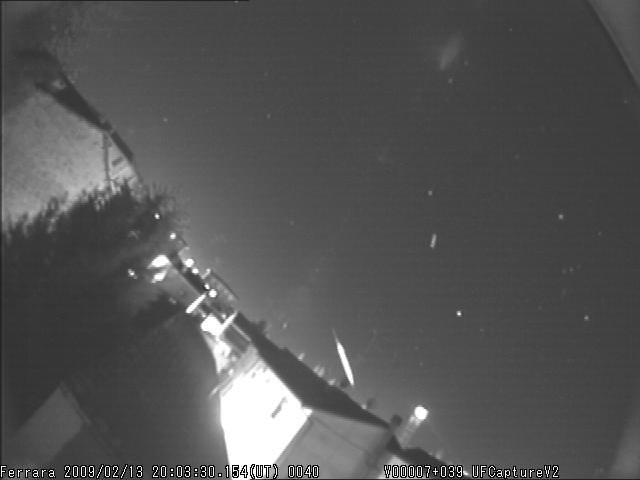A fireball seen over Texas during the daytime on Sunday, Feb. 15th, triggered widespread reports that debris from the recent satellite collision was falling to Earth. The FAA even issued a statement that airplanes should watch for falling debris. However, those reports and statements were premature. Researchers have studied video of the event and concluded that the object was more likely a natural meteoroid about one meter wide traveling more than 20 km/s–much faster than orbital debris. Meteoroids hit Earth every day, and the Texas fireball was apparently one of them. Additionally, a spokeswoman for U.S. Strategic Command said the fireball spotted in the Texas skies Sunday was unrelated to the satellite collision. And as always, the Bad Astronomer was on top of it from the beginning, so check out his first post here (which includes several updates as the news broke), and a follow-up here. There were other fireballs, too….
There was one bolide event in central Kentucky on Friday, February 13. People heard loud booms, felt their houses shake, and saw a fireball streaking through the sky. This occurred just hours after another fireball at least 10 times brighter than a full Moon lit up the sky over Italy. Although it is tempting to attribute these events to debris from the Feb. 10th collision of the Iridium 33 and Kosmos 2251 satellites, the Kentucky and Italy fireballs also seem to be meteoroids, not manmade objects. Italian scientists are studying the ground track of their fireball, which was recorded by multiple cameras, and they will soon begin to hunt for meteorites.
[/caption]
Air Force Major Regina Winchester said that Joint Space Operations Center at California’s Vandenberg Air Force Base has been monitoring the debris from the collision, and that could not have caused the dramatic sight. She also said the fireball was not related to the estimated 18,000 man-made objects that the center also monitors.
“There was no predicted re-entry,” Winchester said about the objects in Earth’s orbit.
She said it was likely a natural phenomenon such as a meteorite.
Check out Spaceweather.com for more pictures, video and info.
Sources: Bad Astronomy, Spaceweather.com, Dallas News


Thank you for this. The object was moving really quickly, it looks like an IRV more than anything, if a bit slower.
Thank you there are always small Meterorites that hit the earth every day. Don’t assume if you see a fireball it is the end of the world.
Why is it that Texans can get a video of a daytime fireball by chance but all those hundreds of sightings of a mile-long UFO over the Lone Star state last year couldn’t even get a few seconds on someone’s cell phone cam?
lol looks as though the people are running from it.
OMG!!! It’s the Revenge of the Transformers! We’re doomed!
Oh No! Electromagnetic phenomena. (Don’t tell Anaconda)